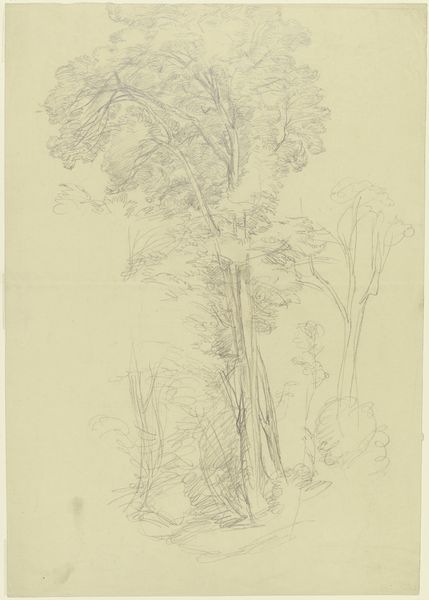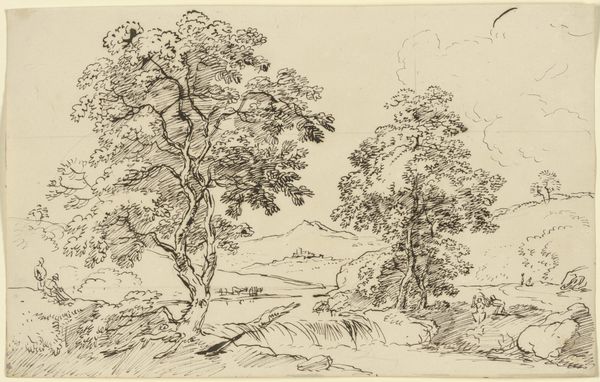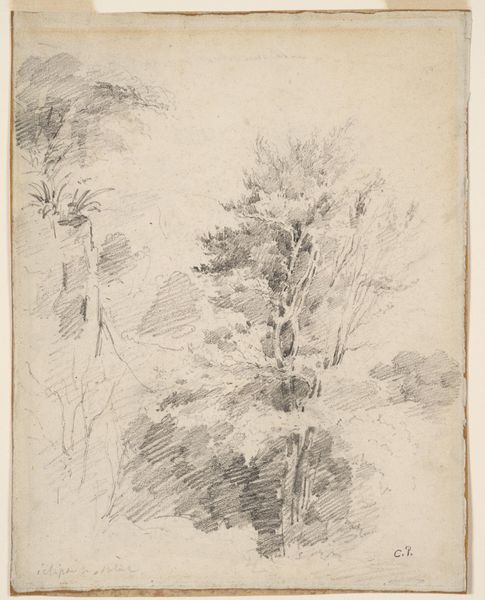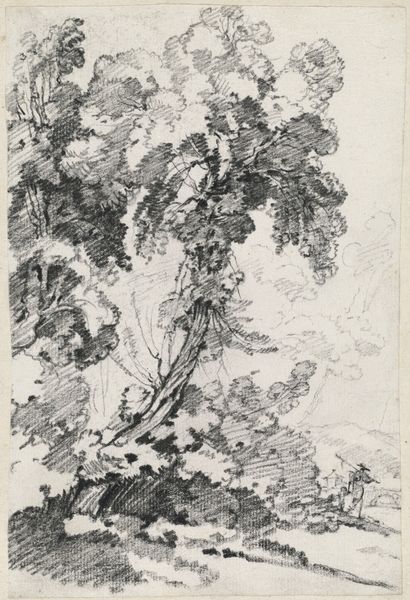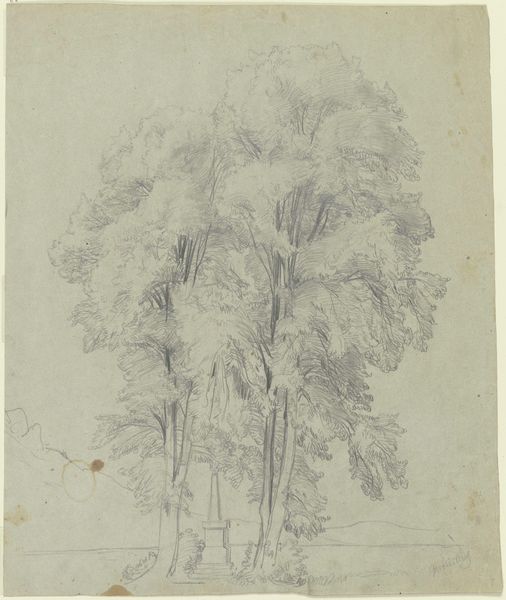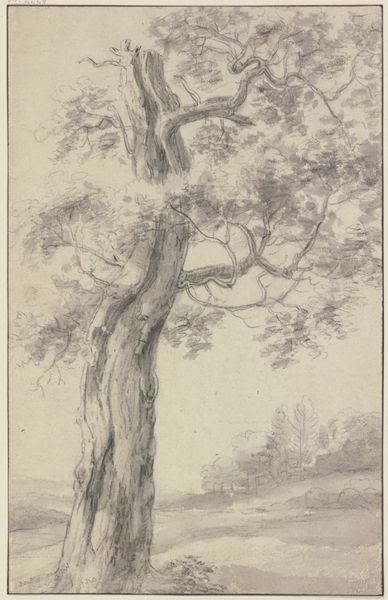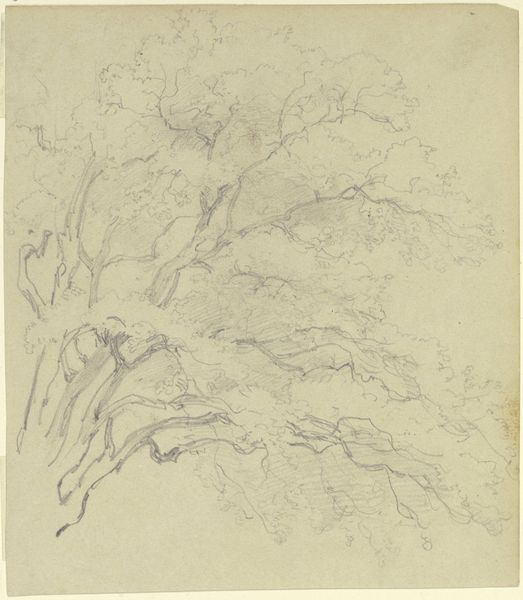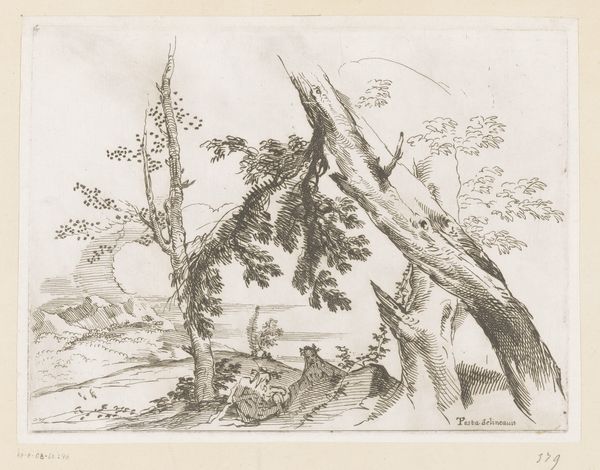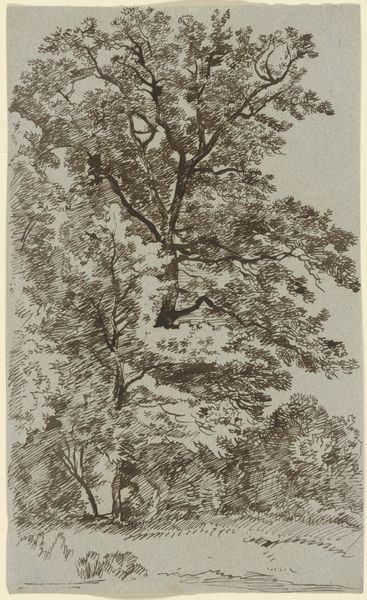
drawing, print, paper, graphite
#
drawing
# print
#
pen sketch
#
pencil sketch
#
landscape
#
paper
#
water
#
line
#
graphite
#
realism
Dimensions: 208 × 143 mm
Copyright: Public Domain
Curator: Here we have "Tree on Bluff Beside Water," a drawing of uncertain date, currently residing here at The Art Institute of Chicago. The artist is identified as Joshua Wilson Faulkner. It appears to be a graphite drawing on paper. Editor: Ah, a whisper of a scene. There’s a haunting delicacy to the line work, like it could vanish if you breathed too hard. Almost as though Faulkner were trying to catch a fleeting thought more than a physical landscape. Curator: The composition certainly directs the eye upward. Note how the heavier density of graphite at the base—the bluff, the trunk—anchors the image, creating a stable foundation. Then, the diminishing strokes lead us into the ethereal branches against the untouched paper of the sky. Editor: Yes! And the negative space is delicious! That raw paper becomes just as important as the sketched foliage. It makes me think about the unsaid things in a poem, the charged silences that hum beneath the surface of what’s visible. The water is so understated, such minimal effort to represent it, yet it's completely evoked by its absence, as much as presence. Curator: Indeed. Observe how Faulkner's restrained hand, primarily through a mastery of tonal variation, manages to imply a recession into the distance. It’s a fairly simple rendering, structurally, yet it speaks to an intimate familiarity with landscape conventions. The eye knows what it's meant to find. Editor: It's interesting that you use "simple" when "honest" is what leaps to mind. There's a sort of raw truth about it that makes it appealing. I'd wager that in person this drawing probably has that quiet aura that pulls you closer, makes you lean in to examine the maker's mark and feel a connection. Curator: It possesses a quietude. Faulkner's adherence to linear perspective, albeit subtly implied, establishes a clear spatial hierarchy within the two-dimensional plane, structuring our gaze according to established visual codes. It serves to order the world through representation. Editor: You know, looking at the uppermost branches, stretching like pale fingers... they remind me of trying to grasp something just out of reach, the way memory sometimes feels. This piece feels so evocative; it makes me long for some time and place I've never known, or maybe knew and forgot. Curator: That is well put, suggesting an interpretation I had not initially considered. Perhaps the true skill of this work lies less in technical mastery and more in its capacity to resonate on an affective register. Editor: Precisely. Maybe that's the most enduring thing that any artwork can really do.
Comments
No comments
Be the first to comment and join the conversation on the ultimate creative platform.
